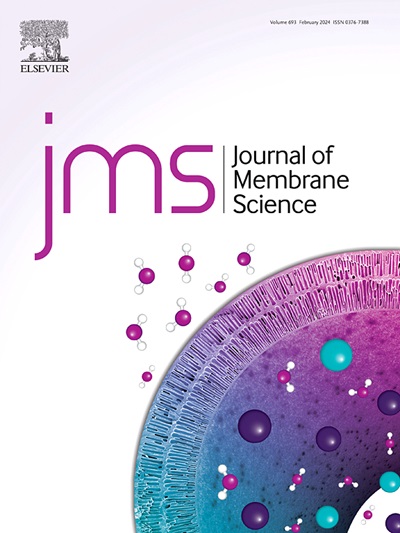Functional ultrathin separators enabling stable zinc anodes for lean-electrolyte zinc-ion batteries
IF 8.4
1区 工程技术
Q1 ENGINEERING, CHEMICAL
引用次数: 0
Abstract
Glass fiber separators are afflicted by zinc dendrite-caused failure and they require excess electrolytes due to large thickness (e.g., 260–780 μm), impairing the electrochemical performance of zinc-ion batteries (ZIBs). Herein, we report a 12 μm-thick functional ultrathin separator (MCNF) of a Cu/graphene interface-modified cellulose nanofiber membrane, realizing highly stable zinc anodes even in lean-electrolyte ZIBs. The MCNF separator optimizes the zinc deposition interface to achieve dendrite-free and highly reversible zinc anodes, since its nanoporous hydroxyl-rich cellulose nanofiber membrane and the conductive zincophilic Cu/graphene layer simultaneously optimize Zn2+ transport behavior including homogenizing ion flux and improving Zn2+ transference number, accelerate zinc desolvation-nucleation process and inhibit anode corrosion. As a result, zinc anodes coupled with the MCNF separator present a long cycle life of 700 h at 5 mA/cm2 and 340 h at 10 mA/cm2, far superior to those using glass fiber separators. Benefiting from the MCNF separator's ultrathin feature as well as the capability of enhancing zinc plating/stripping reversibility and inhibiting side reactions at the zinc deposition interface, Zn//VO2 ZIBs present superior cycle stability exceeding 1800 cycles even under lean-electrolyte conditions. This work provides new inspirations for designing high-performance separators for high-energy-density ZIBs.

求助全文
约1分钟内获得全文
求助全文
来源期刊

Journal of Membrane Science
工程技术-高分子科学
CiteScore
17.10
自引率
17.90%
发文量
1031
审稿时长
2.5 months
期刊介绍:
The Journal of Membrane Science is a publication that focuses on membrane systems and is aimed at academic and industrial chemists, chemical engineers, materials scientists, and membranologists. It publishes original research and reviews on various aspects of membrane transport, membrane formation/structure, fouling, module/process design, and processes/applications. The journal primarily focuses on the structure, function, and performance of non-biological membranes but also includes papers that relate to biological membranes. The Journal of Membrane Science publishes Full Text Papers, State-of-the-Art Reviews, Letters to the Editor, and Perspectives.
 求助内容:
求助内容: 应助结果提醒方式:
应助结果提醒方式:


